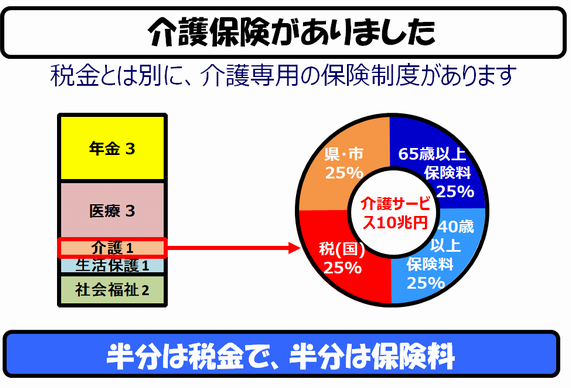『「変化を嫌う人」を動かす』という題目の本を見つけました(読んでいません)。
I found a book titled “Motivating People Who Hate Change” (I haven't read it).
私は、こういう題目の本を見つけると、すぐに皮肉を言ってみたくなります。
When I find a book with a title like this, I immediately want to be sarcastic.
――この本の内容は『「変化を嫌う人を動かす」という変化を嫌う人も動かせるのだろうか?
Some people may not like “change that moves people who don't like change.” Can this book change their mind?
と。
この本のアンチテーゼとなる本(の題目)は、『「変化を嫌う人」を放っておく』ですね。
This book's antithesis (the title) is “Letting ‘People Who Hate Change’ alone.”
もっと単純に言えば『人のことなんぞ、ほっとけ』ということです。
More simply put, 'Leave people alone.
-----
「ものごとを動かす側」にいれば、「変化を嫌う人」が恐しく邪魔くさい存在である、ということは、私も身に染みて知っています。
I know firsthand that if you are on the “moving side of things,” people who are averse to change are a terrible hindrance.
自分でも『随分勝手な奴だ』と思うのですが、主催者(ホスト)側にいる私は、「ものごとを動かす」ために、恐しいパワーを発揮して、他人を巻きこもうとします。
I think to myself, “I am a very selfish person,” but as the organizer (host), I try to get others involved, exerting my fearsome power to “get things moving.
これが一転、参加者(ゲスト)側にいる私は、ホストに対して非常に非協力的な存在 ―― 「邪魔くさい存在」になります。
This turns around, and I, on the participant (guest) side, become very uncooperative with the host -- a “distraction.”
-----
これが事実であることは、卑近な例で説明できます。
That this is true can be illustrated by a crude example.
(その1)
(Case 1)
飲み会の主催者は、会場の手配、時間の調整、そして出席者数の把握の為に奔走します。これらをきちんと管理しないと、飲み会というイベントが成立しないからです。
The organizer of a drinking party is scrambling to arrange a venue, coordinate time, and keep track of the number of attendees. Without proper management of these matters, the event of a drinking party would not be possible.
比して、飲み会の出席者は、なかなか出欠の返事をしませんし、当日、平気でドタキャンをします。そして、お金だけ払うだけで、免責されたかのように振舞います。
In contrast, attendees at a drinking party are slow to reply to a call for attendance and cancel without hesitation on the day of the party. They only pay the fee and act as if they are exempted from liability.
(その2)
(Case 2)
会議を進行する司会者や、結婚式の司会者は、当日のスケジューリングを秒単位で管理しなければなりませんが、発言者やスピーチをする人間は、そんなことを気にせずに、好きなように振舞い、イベントそのものを破壊します。
The moderator who facilitates a meeting or the host of a wedding has to manage the day's scheduling down to the second, but the speaker or the person giving the speech doesn't care about that; they behave as they please and destroy the event itself.
私の経験上、時間を気にしないでスピーチを続ける奴のスピーチの内容は、"退屈"どころか"苦痛"であり、さらにその内容は"低能"だったりします。
In my experience, the content of speeches given by people who do not pay attention to the time is not only “boring” but also “painful,” and their content is often “inept.
以前、以下の日記で、『プレゼン能力絶無の小中校の学校の校長の話』をしました。
I previously wrote about a principal in elementary and middle schools with no presentation skills.
嫁さん:「いや、それは違うと思う。パラリンピックのアスリートの人たちの、あの物凄いパフォーマンスを、私たちの人生の一場面と見なすのには、無理がある」
基本的に「人は、自分以外の人やコトに興味がない」ものです。
“People are not interested in people or things other than themselves.
こんな基本的なことも知らないで、大人をやっている大人は、意外なほど多いです。
Surprisingly, many adults are doing adult work without knowing these basic principles.
いずれにしても、『「変化を嫌う人」を動かす』というのは、かなり難しいことは事実です。
In any case, it is true that 'moving people who don't like change' is quite tricky.
-----
私は、この本を批判している訳ではありません ―― そもそも、まだ読んでいないです。
I am not criticizing the book -- I haven't read it yet.
なので、先程図書館に予約入れておきました。
So I just made a reservation at the library.
読んだ後で、また感想を書きます。
I will write more thoughts after I read it.
もしかしたら、この本に刺激を受けて、『「変化を嫌う人」を放っておく』というコラムの執筆意欲が湧いてくるかもしれません。
Perhaps this book will inspire me to write a column titled “Letting People Who Hate Change Alone.”
